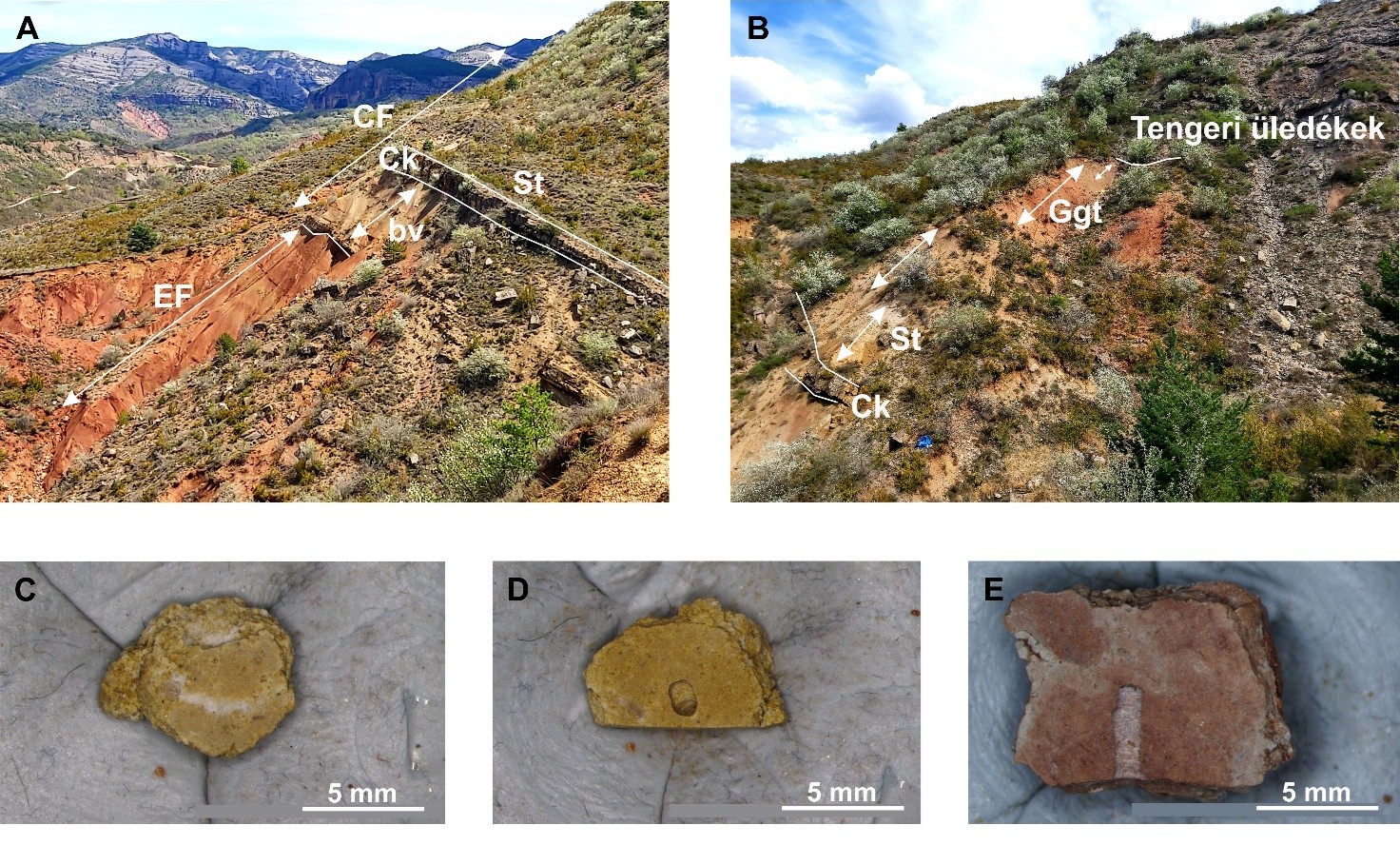Ancient Soils May Help Predict the Impacts of Climate Change
An international research team, led by two scientists from the Institute for Geological and Geochemical Research at the HUN-REN Research Centre for Astronomy and Earth Sciences (HUN-REN CSFK), is investigating environmental changes associated with a significant palaeoclimatic thermal maximum that occurred approximately 56 million years ago. Their findings may contribute to a more accurate understanding of the future impacts of ongoing climate change.
During the Eocene epoch (56 to 33.9 million years ago), which is the focus of the researchers’ study, numerous exceptionally warm periods—so-called hyperthermal events—occurred. The most prominent of these was the Palaeocene–Eocene Thermal Maximum (PETM), which lasted for approximately 270,000 years. During the Late Palaeocene and Early Eocene, global average temperatures were 10–15 °C higher than today, while atmospheric CO₂ concentrations ranged between 800 and 1,800 ppm—two to four times higher than the present-day level (~423 ppm).
Studying past warm climate states that may serve as analogues is therefore essential for improving projections of the future impacts of ongoing climate change.
As part of the project, researchers analysed terrestrial sediment layers and buried ancient soils—including pedogenic carbonate nodules—exposed in the Tremp-Graus Basin, located in the southern Pyrenean foreland, Spain. The clumped isotope composition of these soil carbonates enabled estimates of both the mean summer temperature of ancient soils and the prevailing seasonal air temperatures at the time, as the bonding of heavy carbon and oxygen isotopes (δ¹³C and δ¹⁸O) in carbonates is temperature-dependent. According to the results of clumped isotope thermometry, median calcification temperatures of the soil carbonates indicate soil temperatures of 33.9 and 39.2 °C during the Late Palaeocene and the PETM, respectively.

Late Palaeocene to Early Eocene sedimentary sequences near the village of Esplugafreda, Spain. A: Sedimentary layers of the Esplugafreda Formation (EF; Late Palaeocene) and the Claret Formation (CF; Early Eocene) in the study area. bv – incised valley; Ck – Claret Conglomerate. B: Close-up of Claret Formation sediments. St – yellow soils; Ggt – gypsum-rich soils (both formed during the PETM). C–D: Halved carbonate concretions formed during the PETM, embedded in yellow soils. E: Halved and drill-sampled soil carbonate formed during the Late Palaeocene, from the Esplugafreda Formation.
‘This suggests that mean summer soil temperatures increased by approximately 5 °C during the PETM, which represents a remarkably pronounced rise,’ said Gábor Újvári, the scientific lead of the Budapest-based research team. The researchers also highlight that, according to their results, global temperature distribution during this period was much more uniform than it is today—an important difference with numerous implications for the climate, flora and fauna of the time.
According to their findings, published in Communications Earth & Environment, a high-ranking international journal of the Nature–Springer group, disruptions to the balance of the global carbon cycle lead to dramatic climatic transformations with wide-ranging effects on the biosphere. This implies that, to avoid climate change beyond the tolerance of modern societies, it is essential to significantly reduce the amount of greenhouse gases—primarily CO₂—released into the atmosphere by human activity since the Industrial Revolution.

